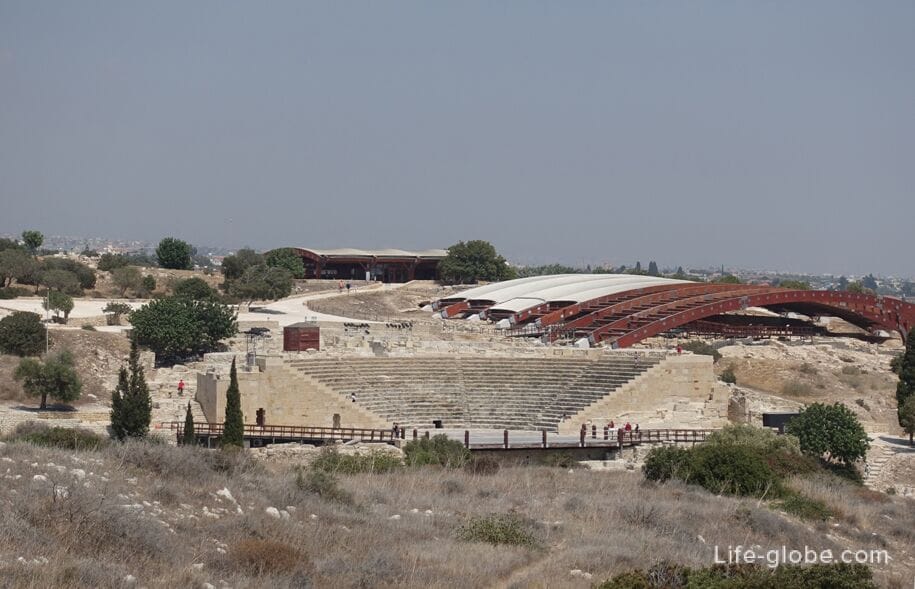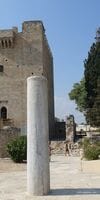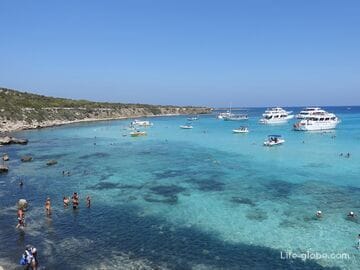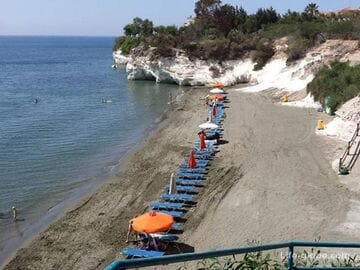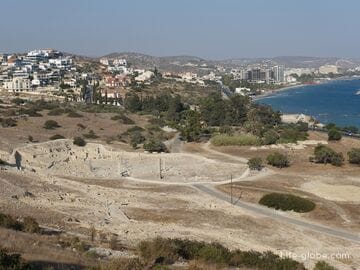Kolossi castle (Kolossi Castle, the Greek word Κάστρο Κολοσσίου) - remains of the medieval castle, located in the eponymous village of Kolossi in the Limassol district, the South-Western part of Cyprus.
The original castle dates from the year 1210, was built by the knights of St. John was the residence of the Supreme military command of the island. In 1306 the castle was briefly owned by the Templars. After the abolition of the knights Templar in 1313, the castle returned into the hands of the Knights (the Hospitallers), but, in 1426, was virtually destroyed by the attacks of the Mamelukes of Egypt.
The surviving castle was built in 1454 by the Hospitallers under the command of Louis de Maniac (Louis de Magnac), from which the castle got its name and whose coat of arms can be seen today on one of the walls of the castle.
Currently, the remains of the castle of Kolossi are some of the most important medieval fortifications that have survived in Cyprus.
To the present day in integrity is preserved, only the main three-storey square castle tower (donjon tower), which reaches a height of almost 22 metres. The size of the tower be about 30x40 meters and a wall thickness of more than 2.5 meters. The roof of the tower is the observation deck.
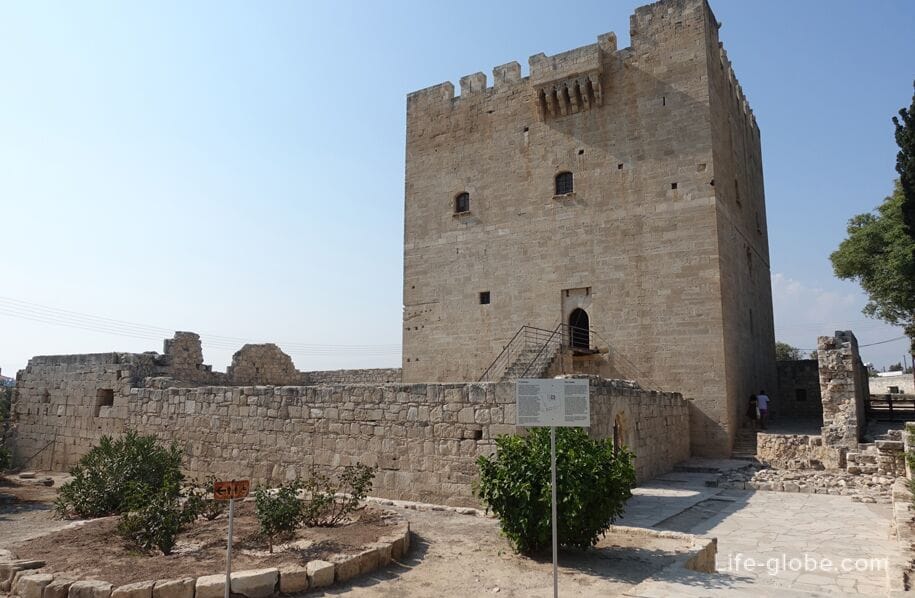
On the South wall (the roof of the castle), just above the entrance to the castle is hinged balcony - loophole (mashikuli) with five holes in the bottom of the balcony between the support arms through which the defenders of the castle threw stones, and poured hot water or hot oil on attackers.

The entrance to the tower of the castle is the stairs leading to the second floor.
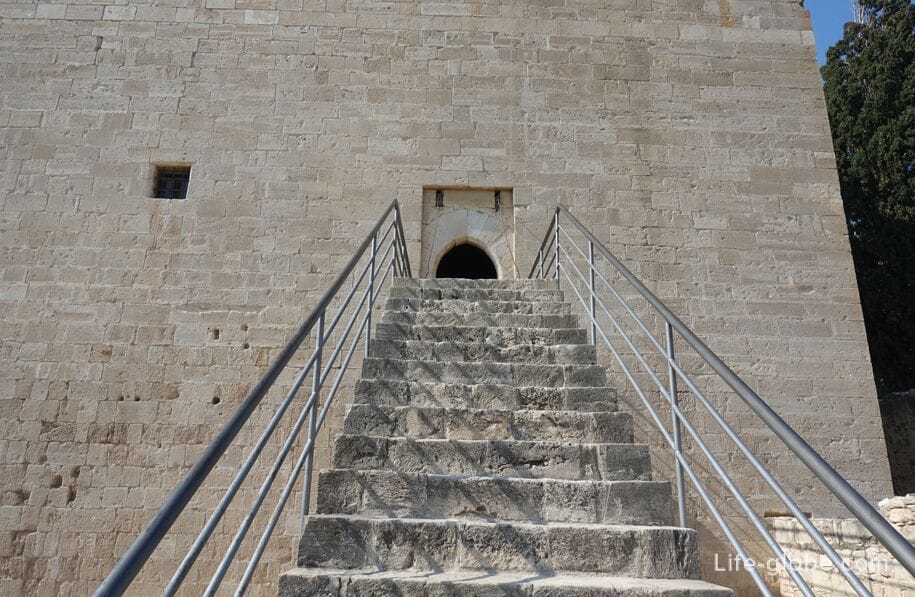
The interior of the castle is empty. There remained only the fireplaces, spiral staircase and fresco.
The second floor is the tower of Kolossi castle consists of two small rooms, each of which is of 13.5-metre length and 6 metre width.
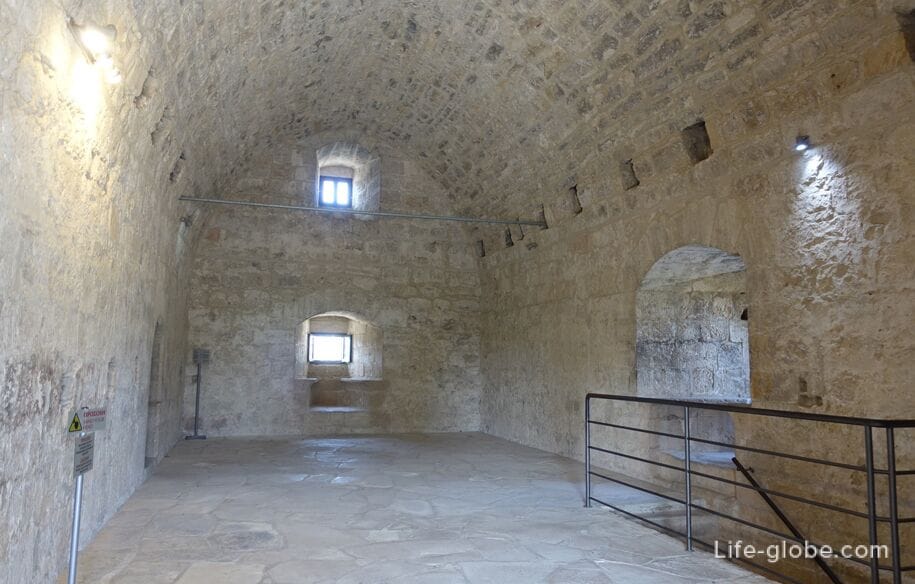
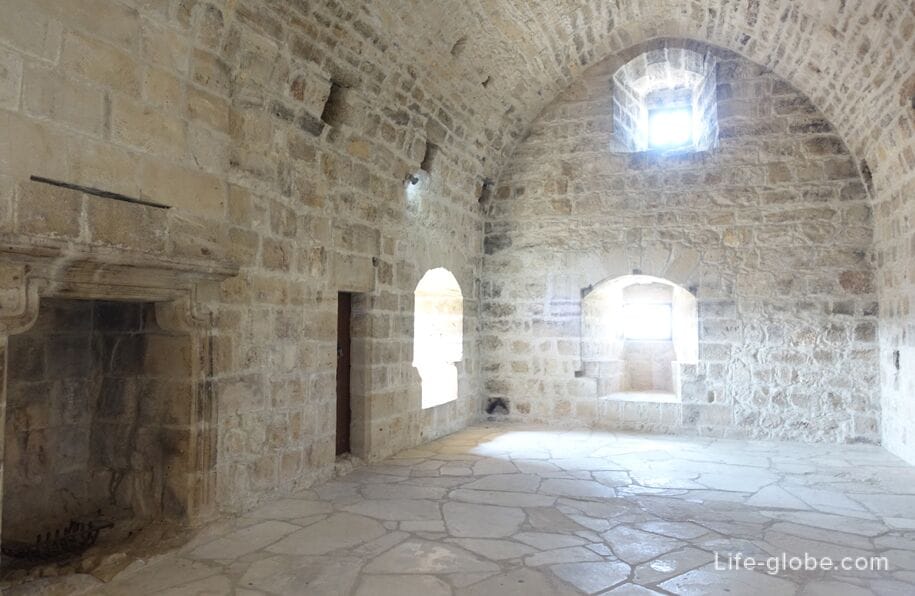
On the wall of the East room, near the main entrance, there is a painting depicting the crucifixion, and dates from the 15th century. This fresco can attest to the fact that the premises were used as places of worship. In the lower left corner of the mural can be seen the coat of arms of the dynasty, Maniac.
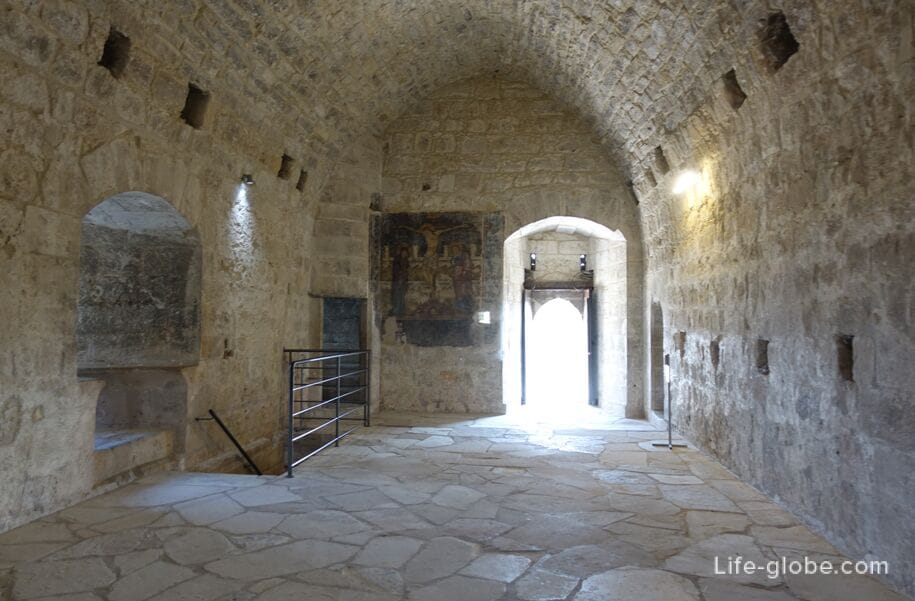
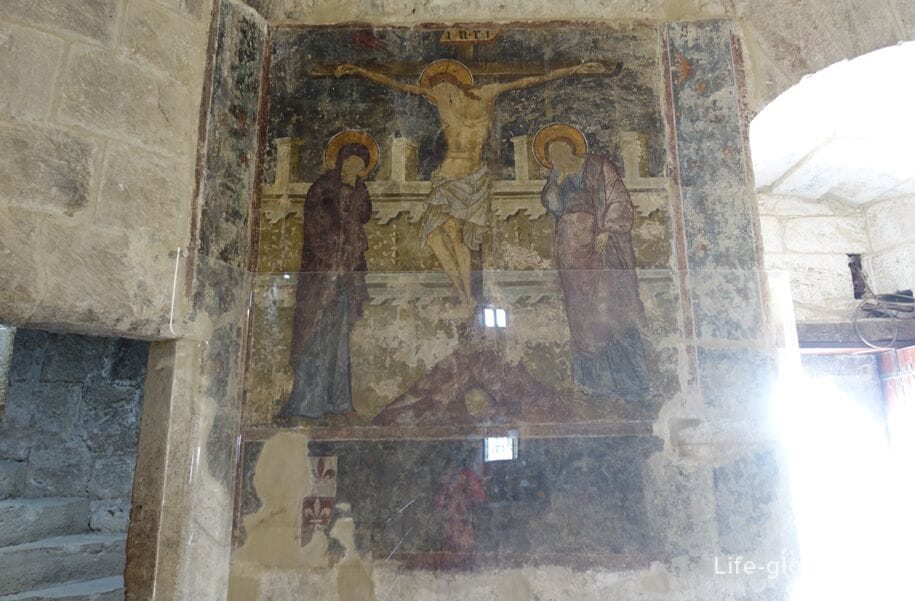
In the Western room on the second floor there is a fireplace that has of 1.30 metre width of 1.70 meters height and a metre deep. The room probably functioned as the main hall for dinners and special events.
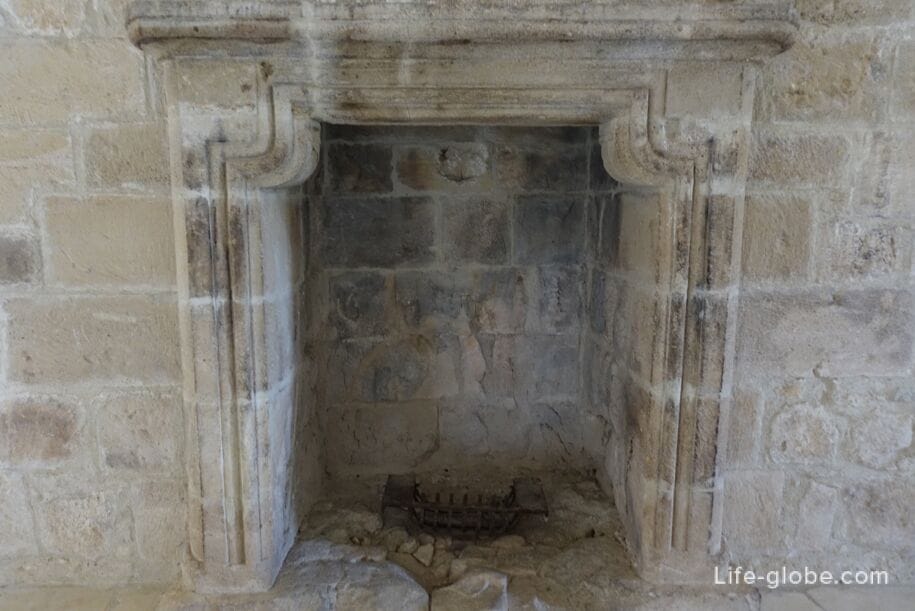
The first floor of the tower of Kolossi castle
From the East rooms on the second floor, the stairs you can go down to the first floor.
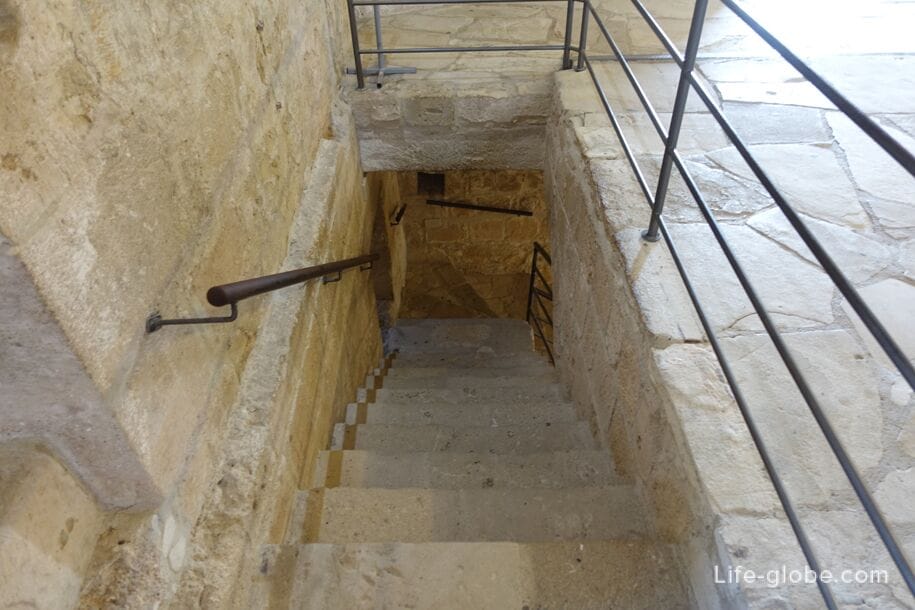
The first floor of the tower of Kolossi castle is divided into three equal spaces with pointed arches. The rooms have a 12.5-meter long and 3 meter wide, connected to each other by arched passages.
Two of the three bedrooms have water cisterns, indicating that the first floor was probably used as storage.
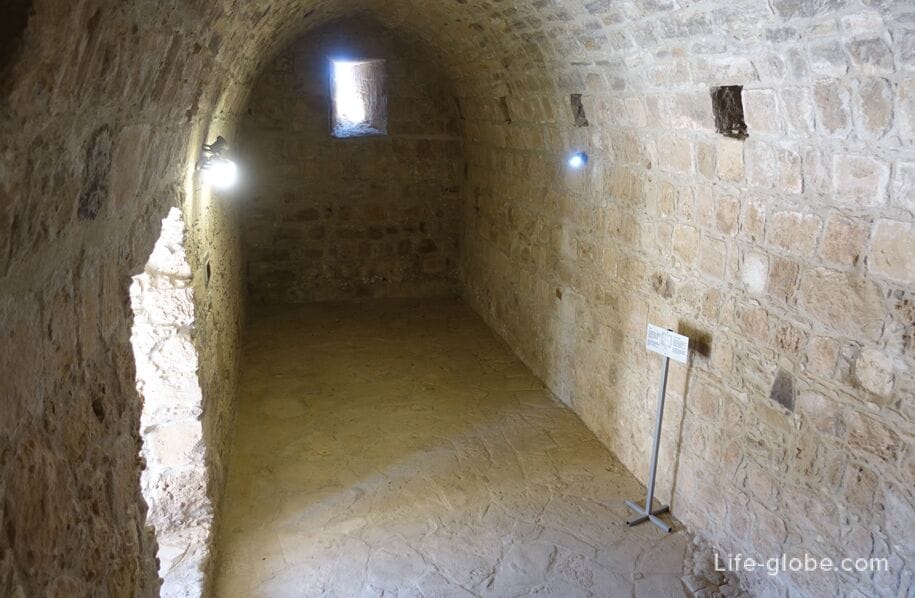

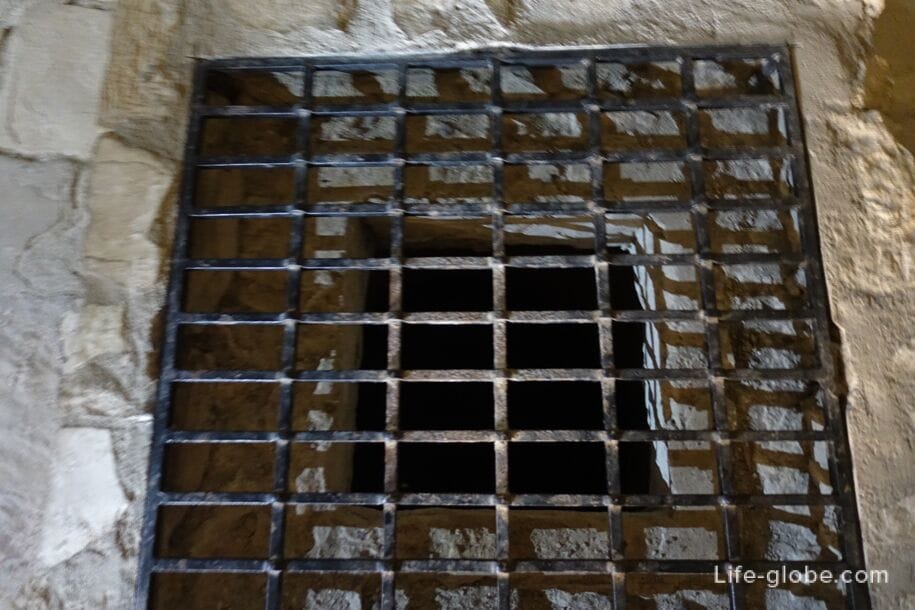
The third floor is the tower of Kolossi castle
The lift to the third floor and then to the roof of the tower is via the ground floor by a spiral staircase.
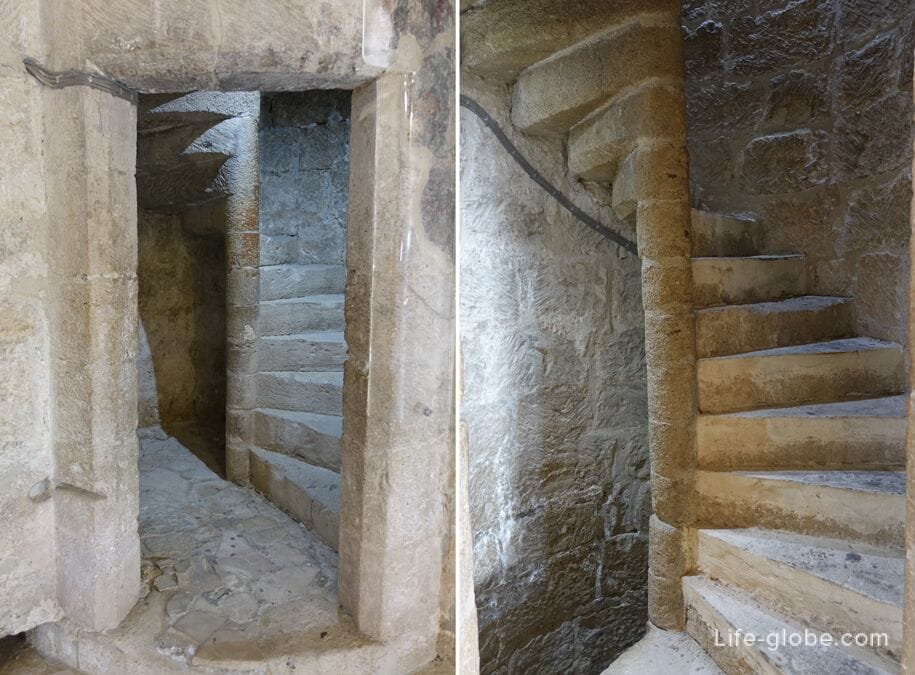
The third floor is divided into two areas, each of which has dimensions of 13.5 meters long and 6 meters wide.
It is believed that one of the rooms belonged to the Great commander (Grand Commander) and was equipped with a restroom built into the North wall, and the second served as the knight's living room.
Judging by the cavities in the upper parts of the walls, the rooms were divided by wooden floors on two levels (floors). Rooms on the second floor, apparently used for habitation.


In each room there is a fireplace with the coat of arms of the dynasty, Maniacs and distinctive Fleur-de-Lis. Both rooms were lit by eight Windows with stone seats, four in each room.
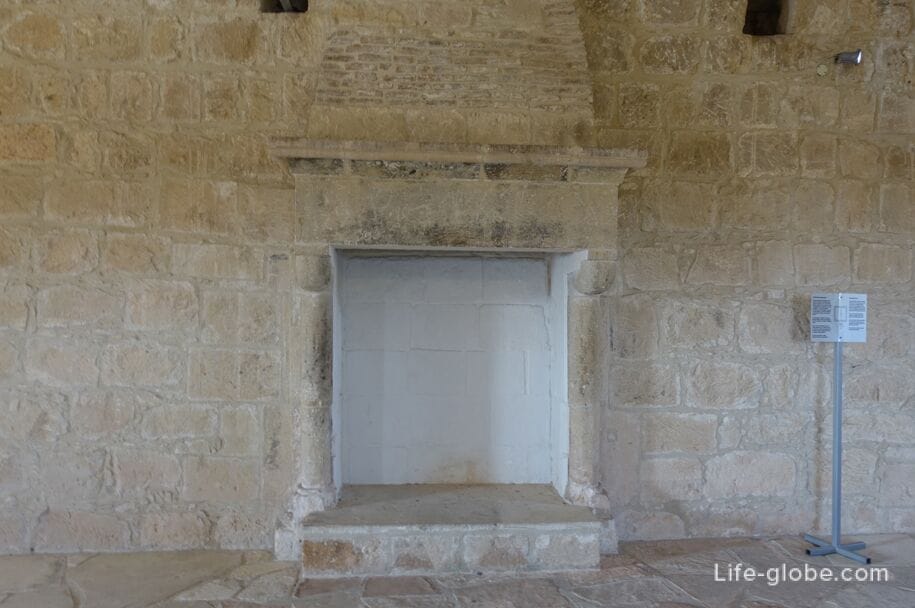
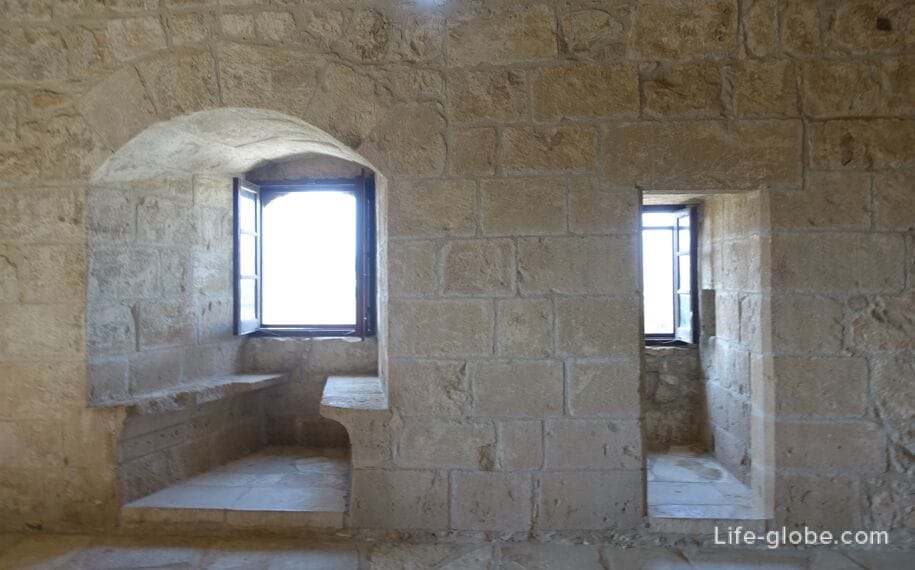
Serrated roof , the highest point of the tower of Kolossi. From the roof offer views of the grounds and castle ruins, and surrounding area
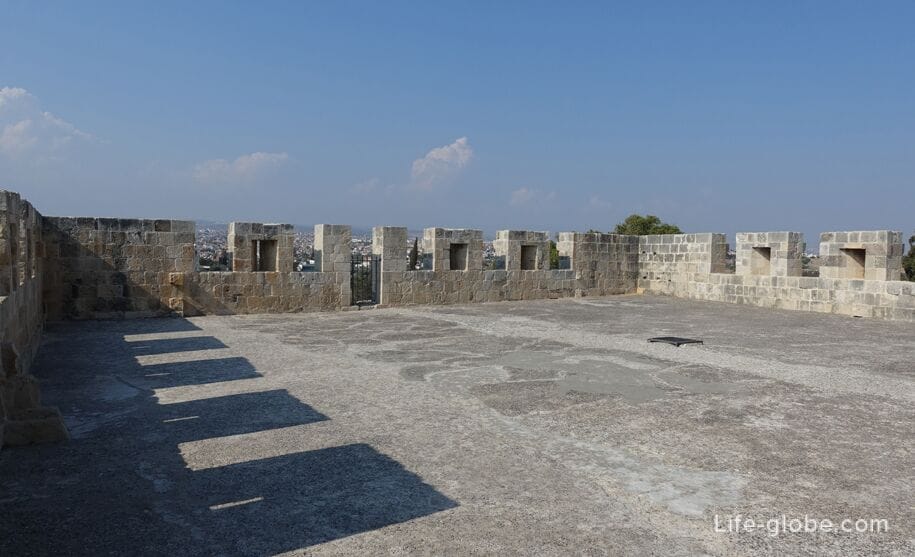
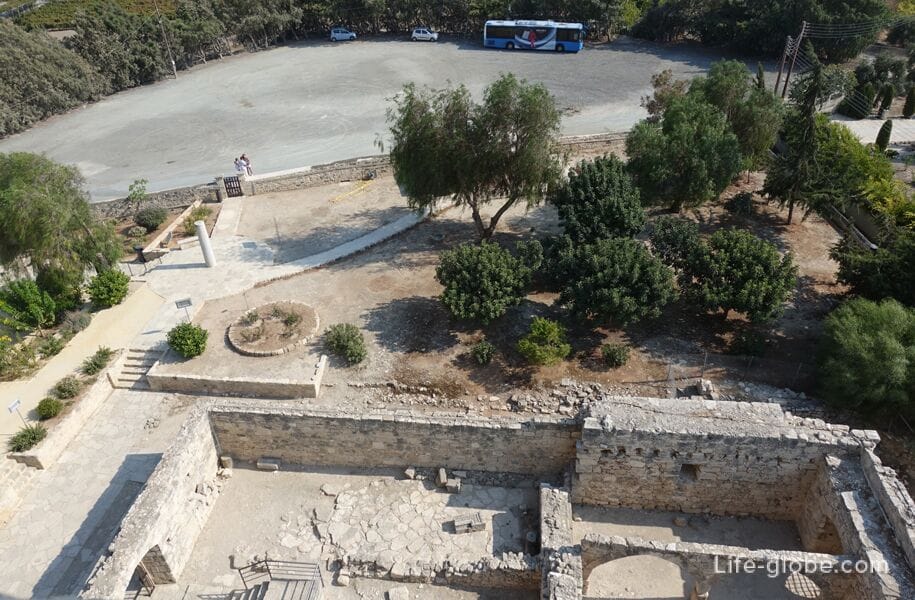
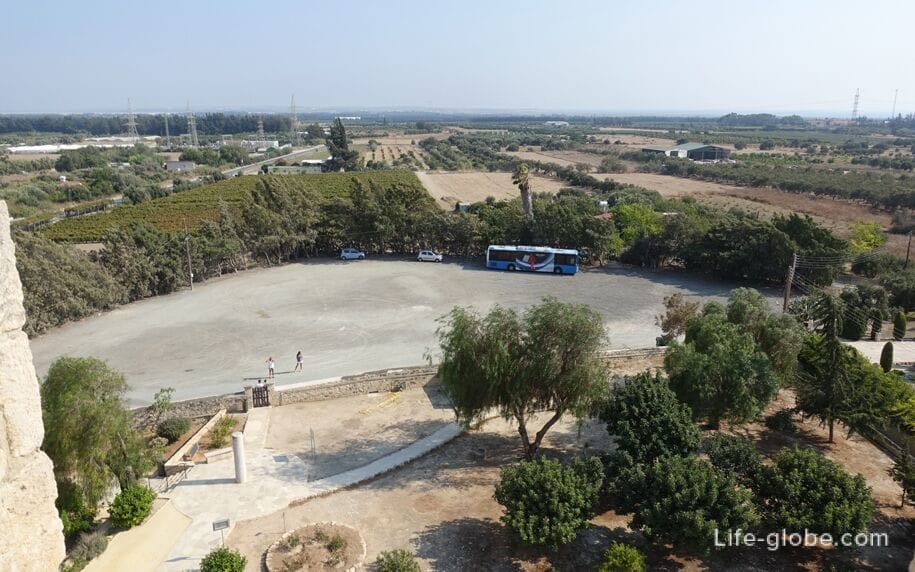


The area around the tower of Kolossi castle
Around the tower of Kolossi castle, on a small open area, you can see some of the ruins of the castle.

The Western part of the castle ruins
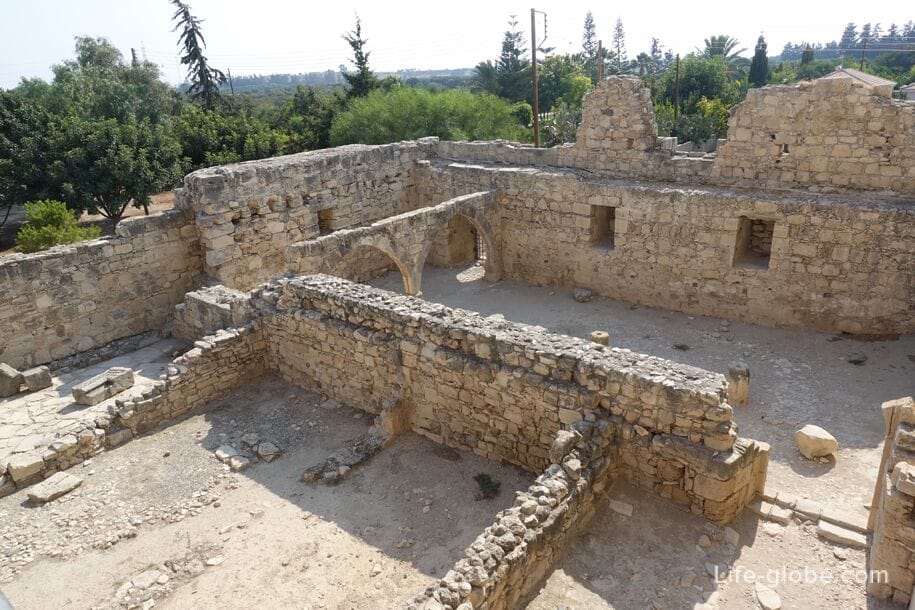

The Eastern part of the castle ruins


On the East side of the castle is a wooden bridge, over which, on the East wall of the tower you can see the cross-shaped marble slab with an overlay consisting of five elements: the four emblems in the shape of a shield and crown.
The Central coat of arms, divided into four sections, represents a complete (joint) coat of arms of Lusignan of Cyprus, consisting of: coat of arms of the Kingdom of Jerusalem, the coat of arms of the Lusignan family, emblems of the Cypriot kingdoms and the emblem of Armenia. The arms of Jerusalem, and Armenia included in a single coat, as in 1393 the king of Cyprus, though technically, it was the king of Jerusalem and Armenia. The crown, depicted on the Central coat of arms, it emphasizes the particular importance of honor and Royal status.
Two shields located on either side of the Royal (Central) are the coats of arms belonging to the order of the Grand master of St. John of Jerusalem, Jean de Eraser and Jacques de Milly.
On the lower shield are the arms of the Grand Commander of the order of Louis de Maniac.
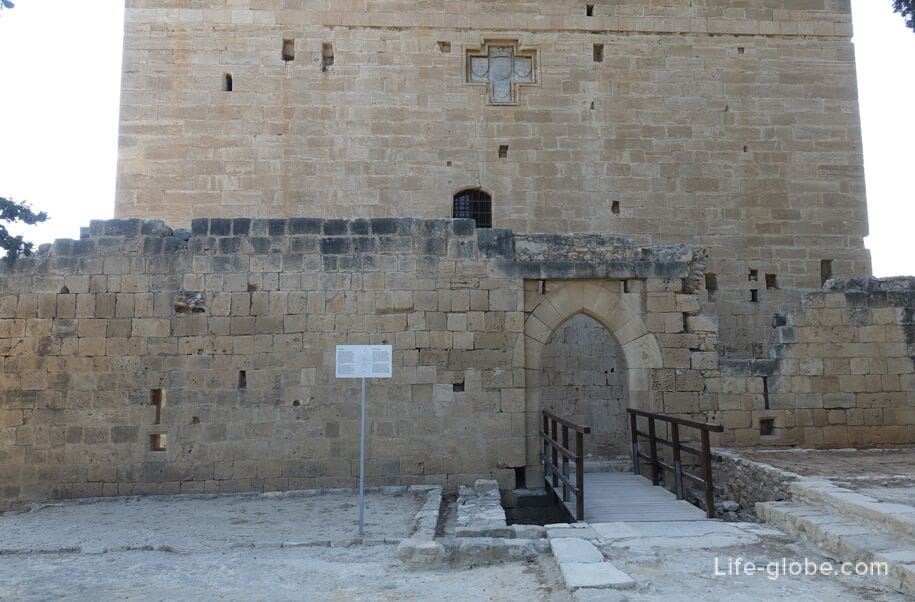
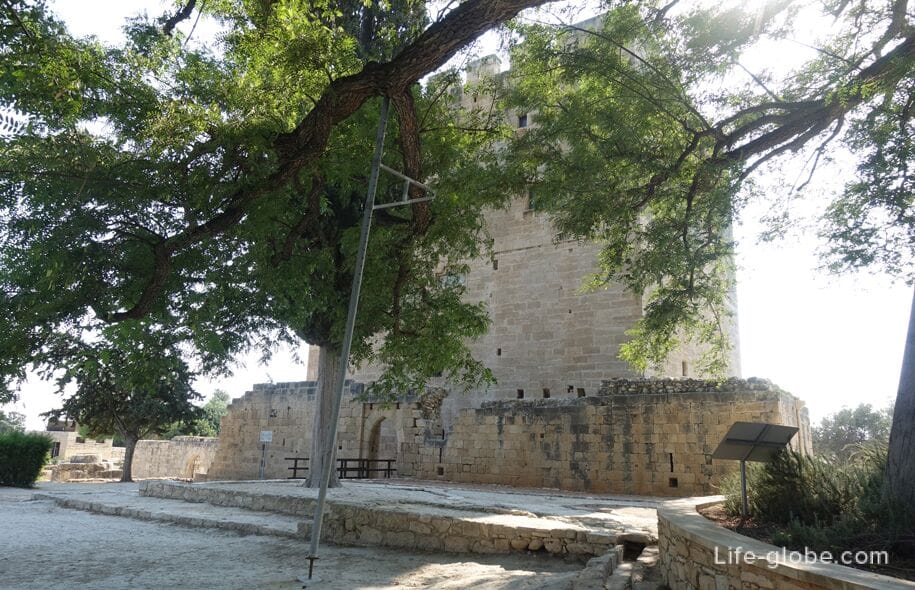
In the middle ages, Kolossi castle had significant strategic importance and a large adjacent territory, which, in particular, was complex for the production of sugar from local sugar cane grown on the plantations in the area. Sugar was a major export of Cyprus in the period.
The area was also known for its sweet Commandaria wine (Commandaria). Wine Commandaria was produced in this region for millennia and is considered to be the oldest continually produced wine in Cyprus.
The Scriptures, after his wedding in the castle of Limassol, king Richard the Lionheart wine called Commandaria "the Wine of kings and king of wines".
To the East from Kolossi castle is situated, belonging to the 14th century, the ruins of an industrial plant for processing of sugar cane, consisting of three core and other auxiliary facilities, as well as the remains of a water mill and aqueduct (aqueduct) that once supplied water to the plant.
The aqueduct dates back to 1365 - 1374 years and was built on the orders of the Grand master of the Hospitaller of Raymond Berenger.
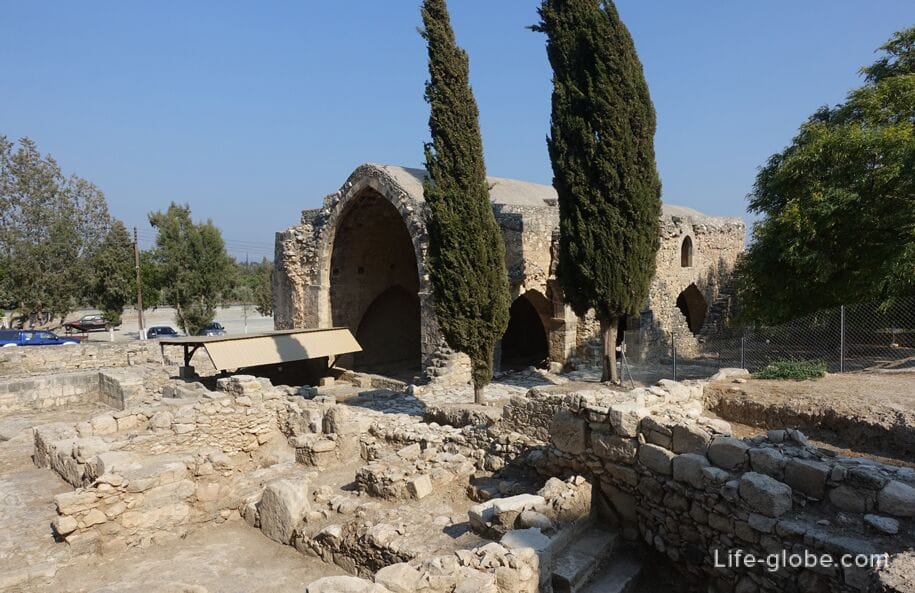

In the courtyard of the castle grows a large Type tree Tipuana (Tipuana Tipu), also known as rosewood (Rosewood). A deciduous tree with yellow flowers. Flowering and fruiting from may to August. Trees originating from Argentina, planted in Cyprus as a decorative.
The circumference of 4.80 meters, height - 26 m, age over 200 years old.
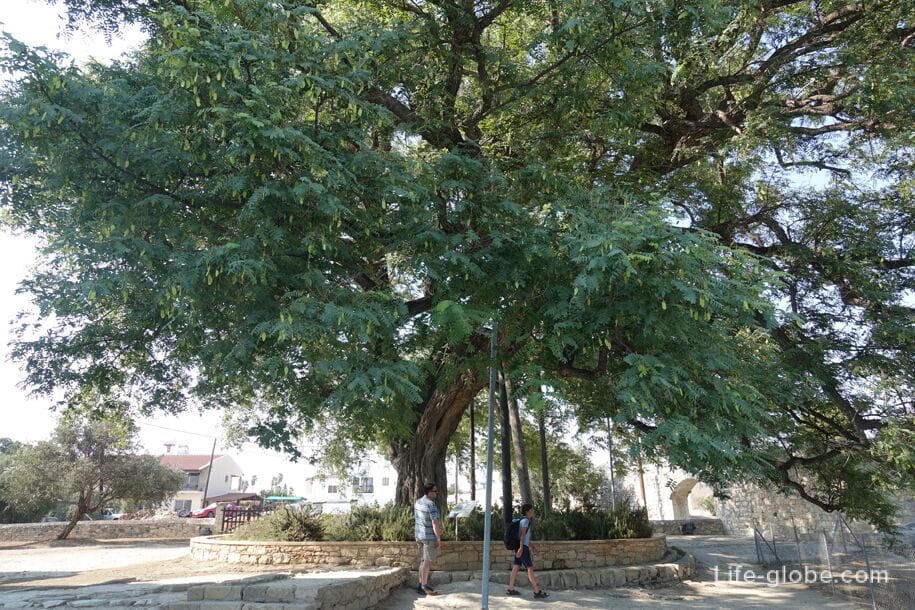
Practical information
Entrance to the castle and, consequently, in the castle, pay. The ticket costs € 2.50.
Kolossi castle Hours: daily
winter hours (September 16 - April 15): 08:30 - 17:30;
- summer hours (16 April - 15 September): 08:30 - 19:30.
Attention! Opening hours and ticket prices are subject to change, please check before visiting.
On-site toilet. Near the castle there is a cafe.
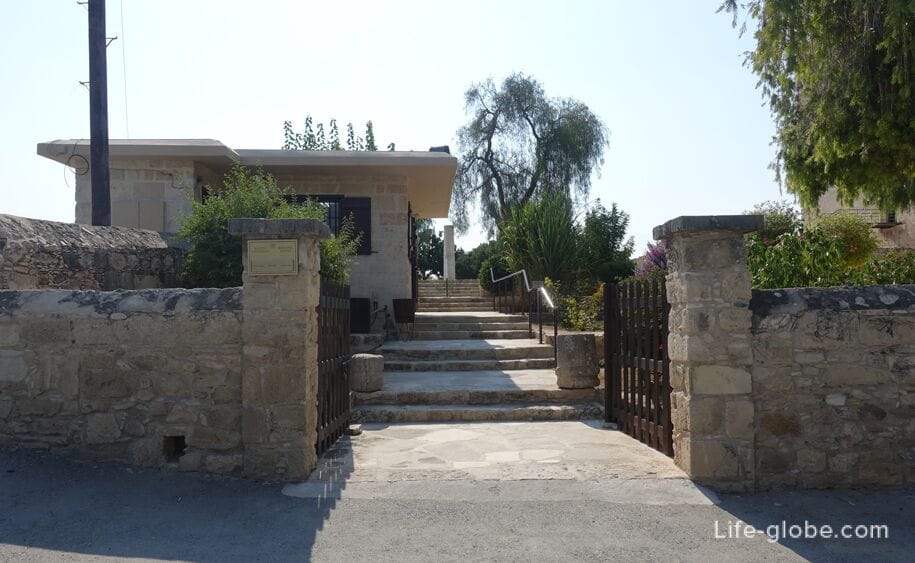
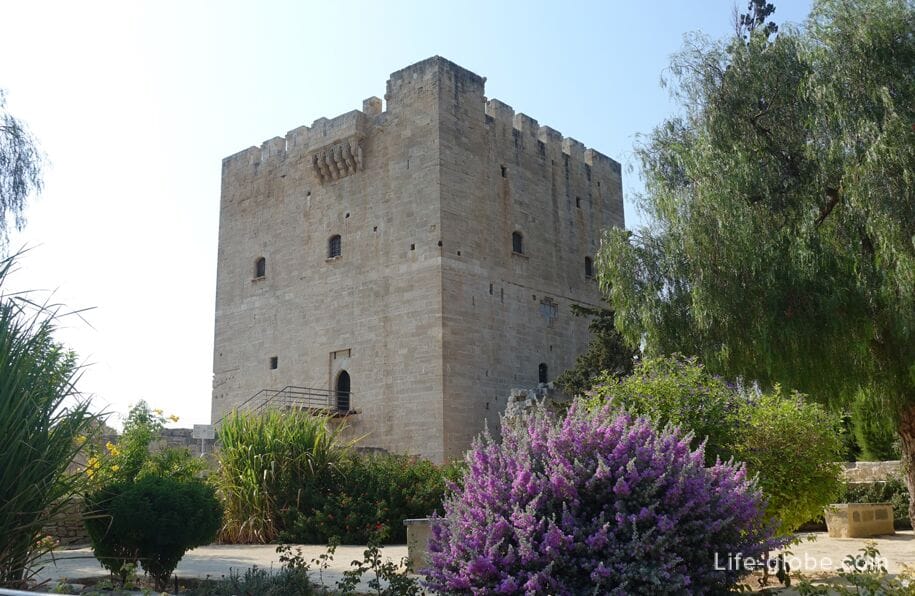
How to get to Kolossi castle
By taxi or car from any point of Cyprus. Car hire in Cyprus...
The nearest large town is Paphos. Distance from the historical centre of Limassol to Kolossi castle is around 11 km.
Buses from Limassol
The bus station with the Old hospital (Leontiou EMEL Central bus station) bus № 17 - the bus reaches the entrance to Kolossi castle (the final stop). The duration of The trip, about 40 minutes.
Also bus No. 16, 16A and 16B, it is possible to reach to a stop "the Apostle Luke elementary school (Kolossi)" that on the same street (road B6). From the bus stop to the castle Kolossi, where some 850 metres to the South. Along the way you can see: the Church of Saint-Tamara (Tamara Saint), St. Andronikos (Saint Andronikou), Apostolos Lucas (Απόστολος Λουκάς), St Antonius (Saint Antonios) and the town hall.
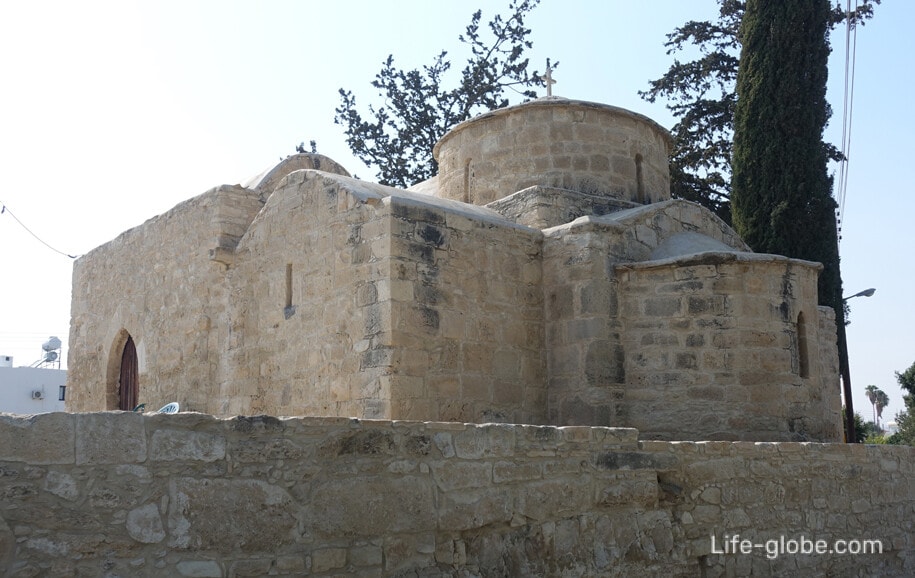
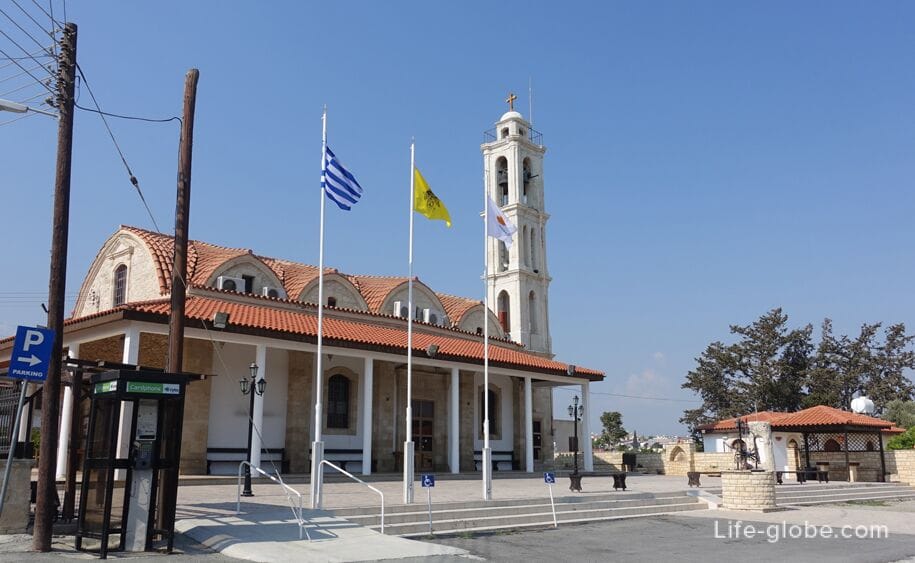
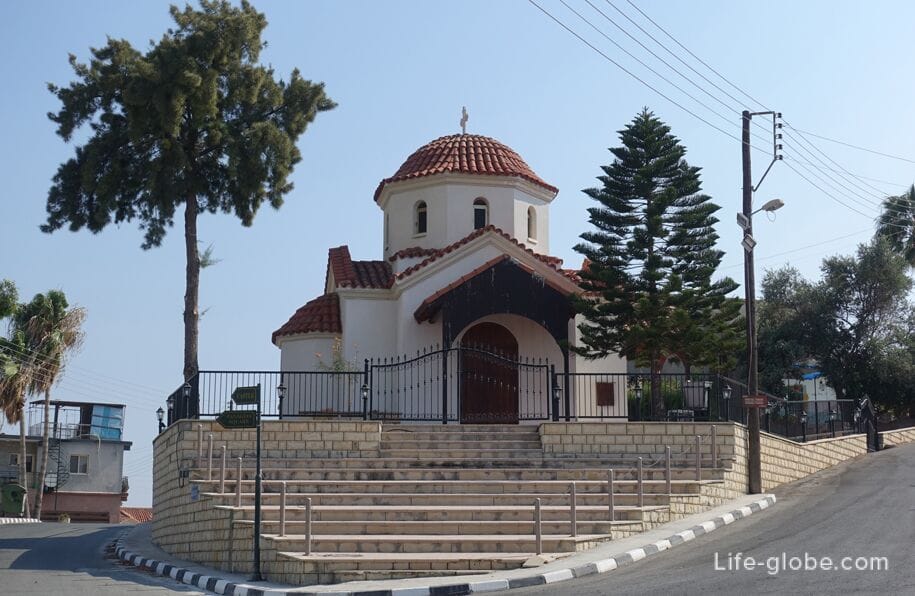
Near Kolossi castle is another famous historical attraction - the ruins of the ancient city of Kourion, which is to visit together with the castle of Kolossi. Read more about the ancient city of Kourion and its attractions...
